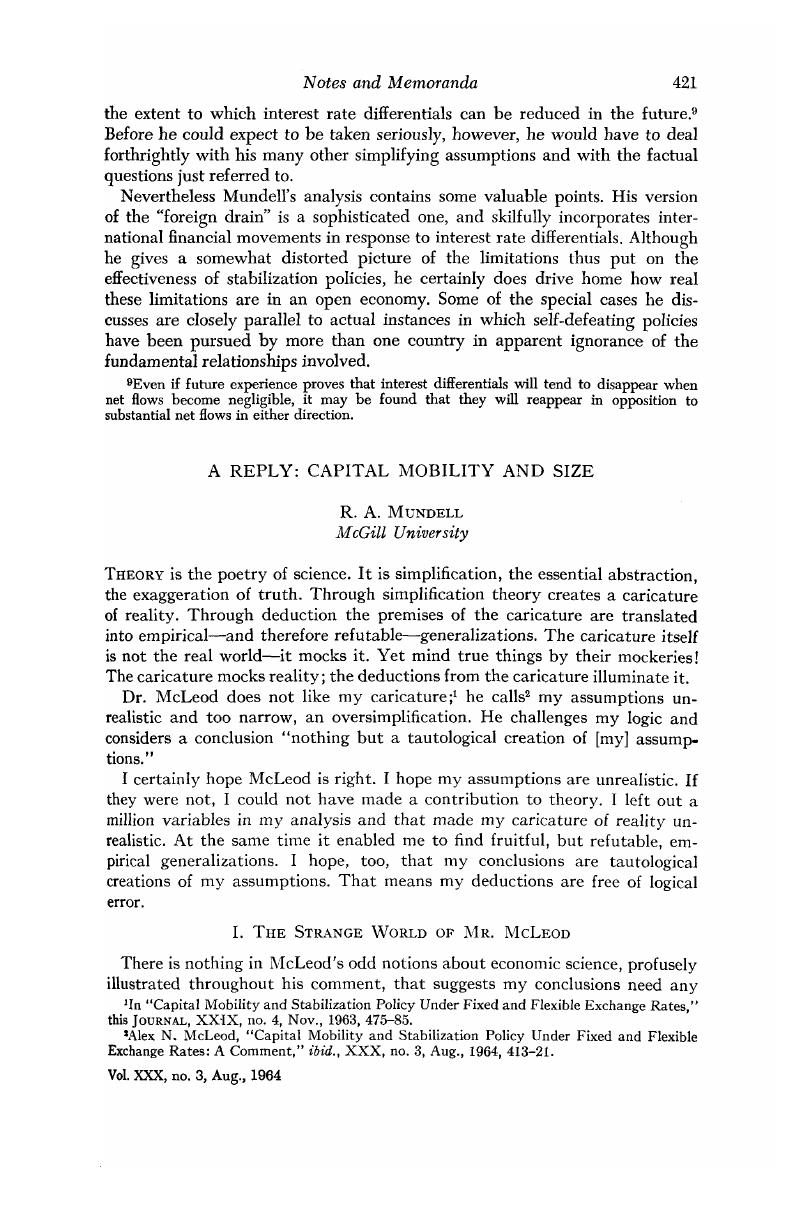Crossref Citations
This article has been cited by the following publications. This list is generated based on data provided by
Crossref.
Kemp, M. C.
1966.
Monetary and Fiscal Policy under Alternative Assumptions about International Capital Mobility.
Economic Record,
Vol. 42,
Issue. 1-4,
p.
598.
Graf, Gerhard
1975.
Wirtschaftspolitische Maßnahmen und Konjunkturtransmission im Zweiländermodell.
Journal of Contextual Economics – Schmollers Jahrbuch,
Vol. 95,
Issue. 3,
p.
261.
Holmes, James M.
and
Smyth, David J.
1977.
The relation between international capital flows and interest rates: A theoretical analysis.
De Economist,
Vol. 125,
Issue. 1,
p.
95.
Ip, Pui Chi
1978.
THE OPEN‐ECONOMY PHILLIPS CURVES AND THE WELFARE GAINS FROM TRADE*.
Metroeconomica,
Vol. 30,
Issue. 1-2-3,
p.
73.
Henderson, Dale W.
1978.
Fiscal policy in closed and open economies.
Carnegie-Rochester Conference Series on Public Policy,
Vol. 9,
Issue. ,
p.
181.
Argy, V. E.
1978.
ANALYTICAL ASPECTS OF CURRENT INTERNATIONAL ECONOMIC ISSUES*.
Economic Papers: A journal of applied economics and policy,
Vol. E1,
Issue. 58,
p.
32.
Levin, Jay H.
1979.
The international assignment of stabilization policies under fixed and flexible exchange rates.
Journal of International Economics,
Vol. 9,
Issue. 1,
p.
65.
Turnovsky, Stephen J.
1979.
Optimal monetary policy under flexible exchange rates.
Journal of Economic Dynamics and Control,
Vol. 1,
Issue. 1,
p.
85.
Khatkhate, Deena R.
and
Short, Brock K.
1980.
Monetary and central banking problems of mini states.
World Development,
Vol. 8,
Issue. 12,
p.
1017.
Obstfeld, Maurice
1982.
The capitalization of income streams and the effects of open-market policy under fixed exchange rates.
Journal of Monetary Economics,
Vol. 9,
Issue. 1,
p.
87.
Langohr, Herwig
1982.
Eurobanking, open market operations and the monetary base.
European Economic Review,
Vol. 17,
Issue. 2,
p.
231.
KOHLI, ULRICH R.
1982.
BEGINNING‐ AND END‐OF‐PERIOD SPECIFICATIONS OF ASSET DEMAND FUNCTIONS IN BALANCE‐OF‐PAYMENTS THEORY*.
Australian Economic Papers,
Vol. 21,
Issue. 39,
p.
332.
Corden, W.Max
and
Turnovsky, Stephen J.
1983.
Negative international transmission of economic expansion.
European Economic Review,
Vol. 20,
Issue. 1-3,
p.
289.
Djajić, Slobodan
1983.
Monetary and commercial policy in a two-country flexible exchange rate model with perfect capital mobility.
Journal of Monetary Economics,
Vol. 12,
Issue. 3,
p.
399.
Zenger, Christoph
1985.
Ertragsbilanz und Portfoliotheorie der Wechselkurse: Eine grafische Illustration.
Credit and Capital Markets – Kredit und Kapital,
Vol. 18,
Issue. 4,
p.
478.
Marston, Richard C.
1985.
Vol. 2,
Issue. ,
p.
859.
Niehans, Jürg
1987.
Monetary Theory and Economic Institutions.
p.
243.
International Monetary Fund
1988.
Policy Assignment Strategies with Somewhat Flexible Exchange Rates Policy.
IMF Working Papers,
Vol. 88,
Issue. 40,
p.
i.
Frieden, Jeffry A.
1991.
Invested interests: the politics of national economic policies in a world of global finance.
International Organization,
Vol. 45,
Issue. 4,
p.
425.
Phelps, Edmund S.
1992.
International Economic Interdependence, Patterns of Trade Balances and Economic Policy Coordination.
p.
1.
